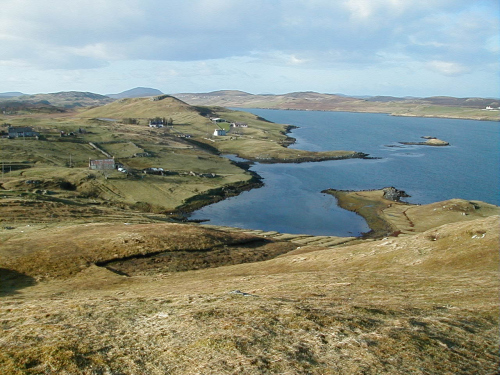The Riot in Wick -1859
SABAID MOR WICK
The Wick riot which took place in August 1859 between Lewis fishermen and East coast fishermen was a ‘free for all’ that lasted a whole week. Although perhaps relations between East Coast fishermen and Hebridean fishermen may not have been too good, it was a dispute between two lads over an apple, a lad from Wick and one from Lewis that started the “Sabaid Mor”
Police apprehended the 14 year old Lewis lad, Malcolm Macleod “Calum Alastair“, 2 Habost, Lochs who was helping in his father’s boat. Skipper Alastair had moved from Balallan to Habost to take the place of a family that was evicted and moved away to Harris by the notorious factor Donald Munro.
Hundreds of people were engaged on each side in the fight and some Lewismen were arrested and taken to jail and this action by the police aggravated the situation. Domhnull Ruaridh Mackenzie, 10 Laxay, assisted by his crew and others removed the mast from his boat and used it as a battering ram against the jail door and released the prisoners. Almost every village in Lewis were represented in the riot and some of the men were stabbed and many hurt while some on both sides were given a ducking in the harbour.
An unusually strong man from Keose played a prominent part, Rob MacDhòmhnaill 12 Keose “Mac Domhnuill Bhan“, one of his roles was to provide ammunition for the rioters by breaking up barrels and supplying staves. In the end the local authorities called in the military and Rev George Mackay of Tongue and peace was restored just before the end of the fishing season. A warrant was issued for the arrest of the strong man from Keose, Robert Macdonald and in order to evade the police he fled immediately first on foot, but he had not gone far when he was overtaken by a carriage and pair. MacDonald’s signal for a lift was ignored and as a consequence he ran after the carriage and jumped in and ejected the driver and his passenger and left them by the roadside. By the time the horses became exhausted he was near Poolewe, where he got the ferry “Mary Jane” to Lewis but the Lewis police were informed and Macdonald had to go into hiding with friends in Cromore until he thought the furore had died down. Back home in Keose he soon joined the other youths who used to gather in the manse kitchen with the servants. One evening the Stornoway police turned up and arrested Rob and handcuffed him to one of the officers. Near a Loch outside the village Rob said he was not going any further and asked the police to release him, when they refused he threatened to drag the officer to whom he was handcuffed into the Loch. After a brief struggle the officers felt they were no match for Rob and decided to release him to the delight of his friends, a large number of whom had gathered to give moral support to Rob. Knowing that he was a marked man he decided to leave via Tarbert to resume his seafaring career, this time in the Merchant Navy. Alas a few years later he was lost in the Thames Estuary.
